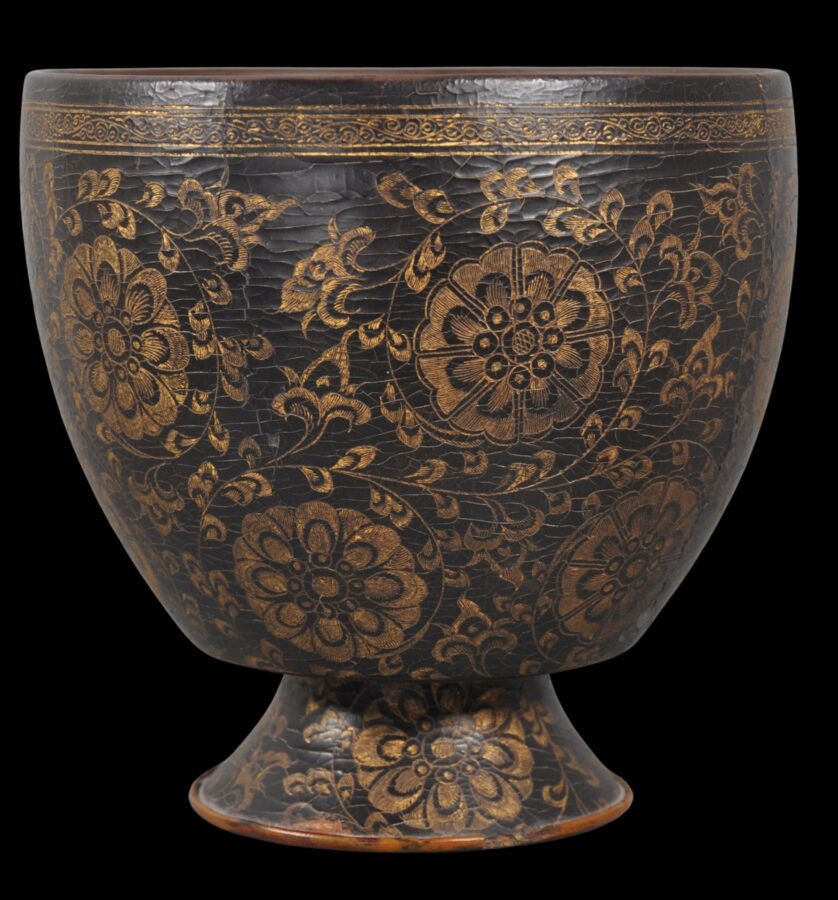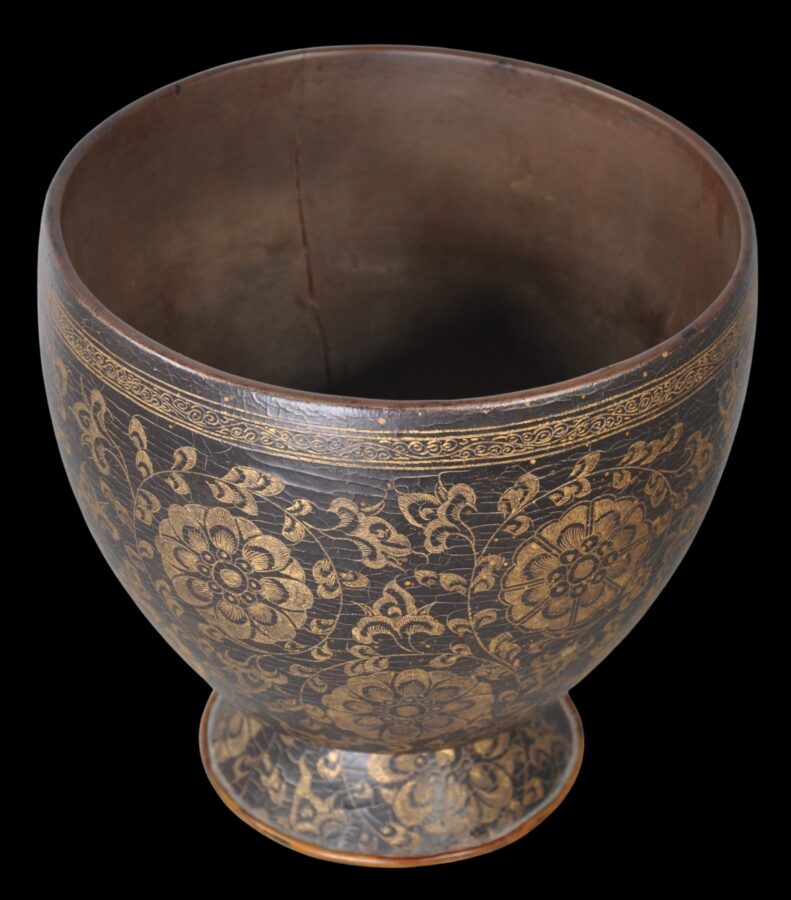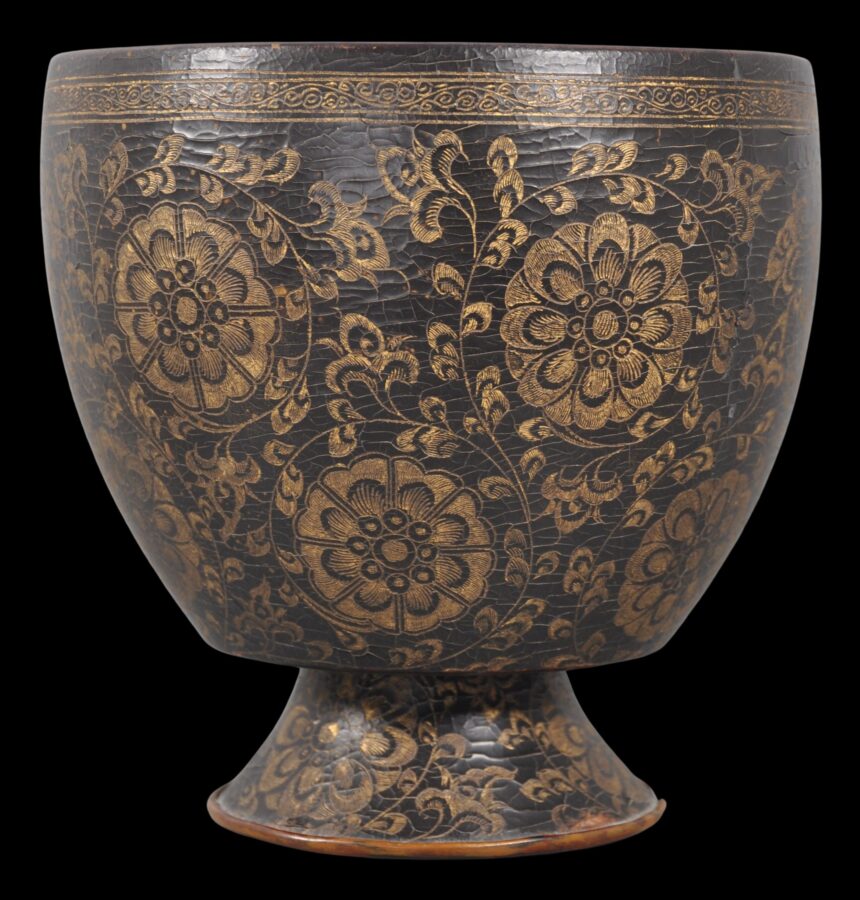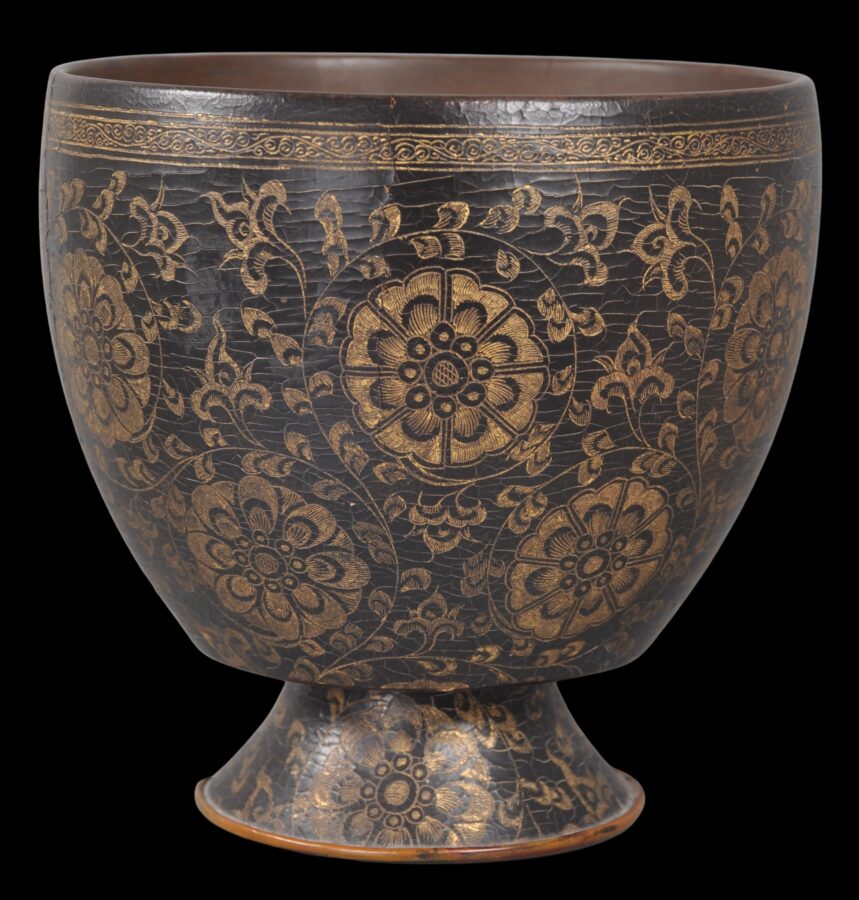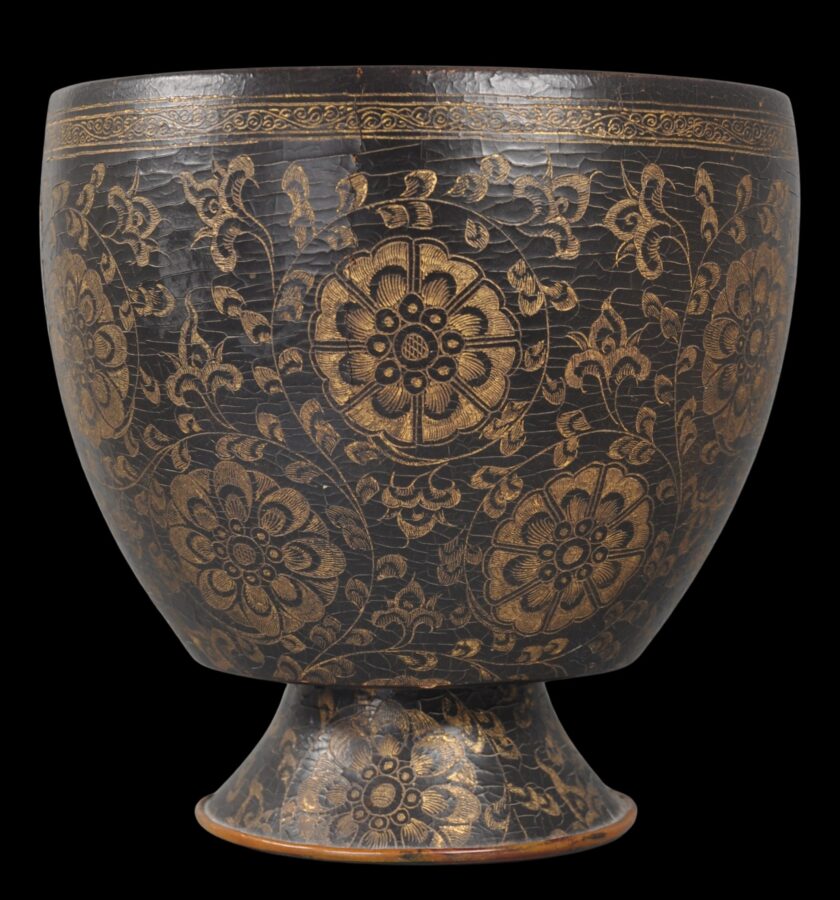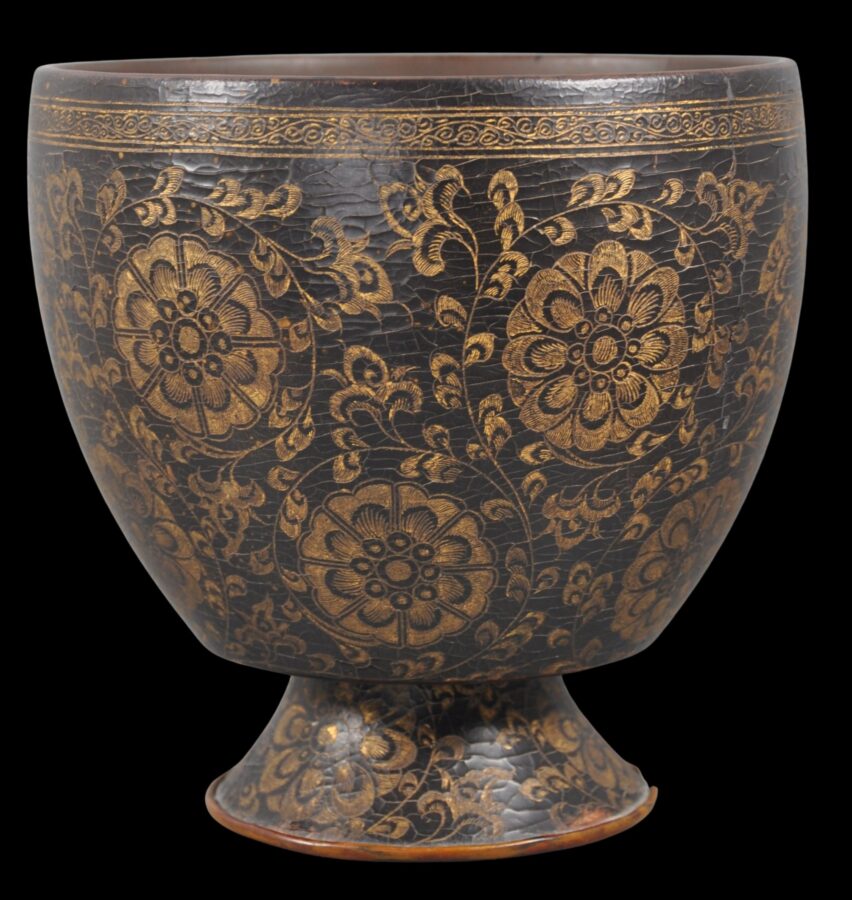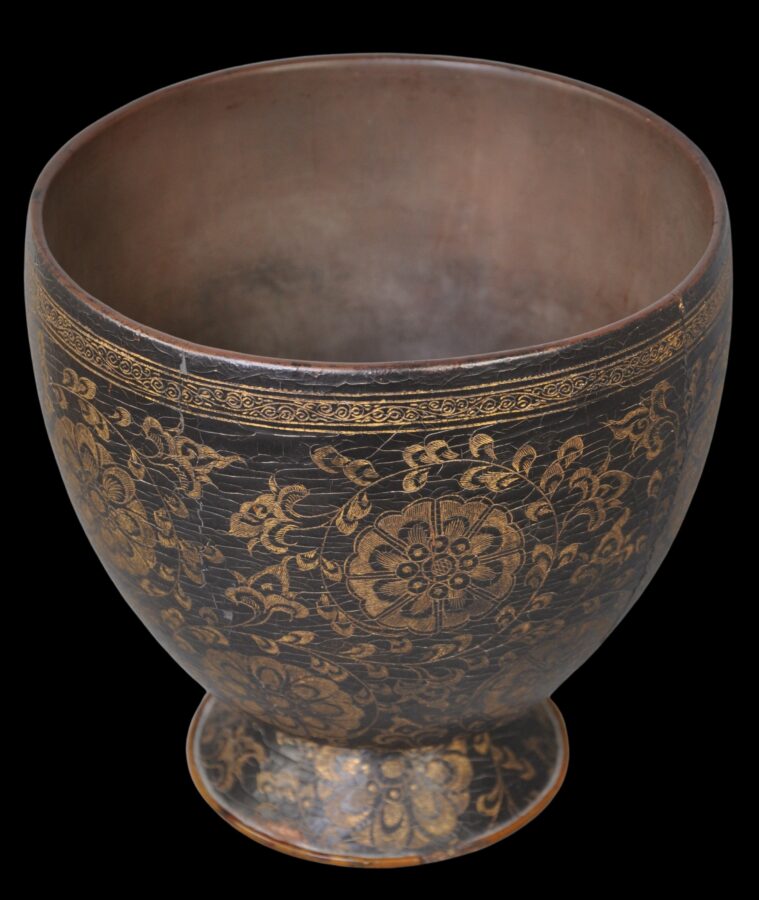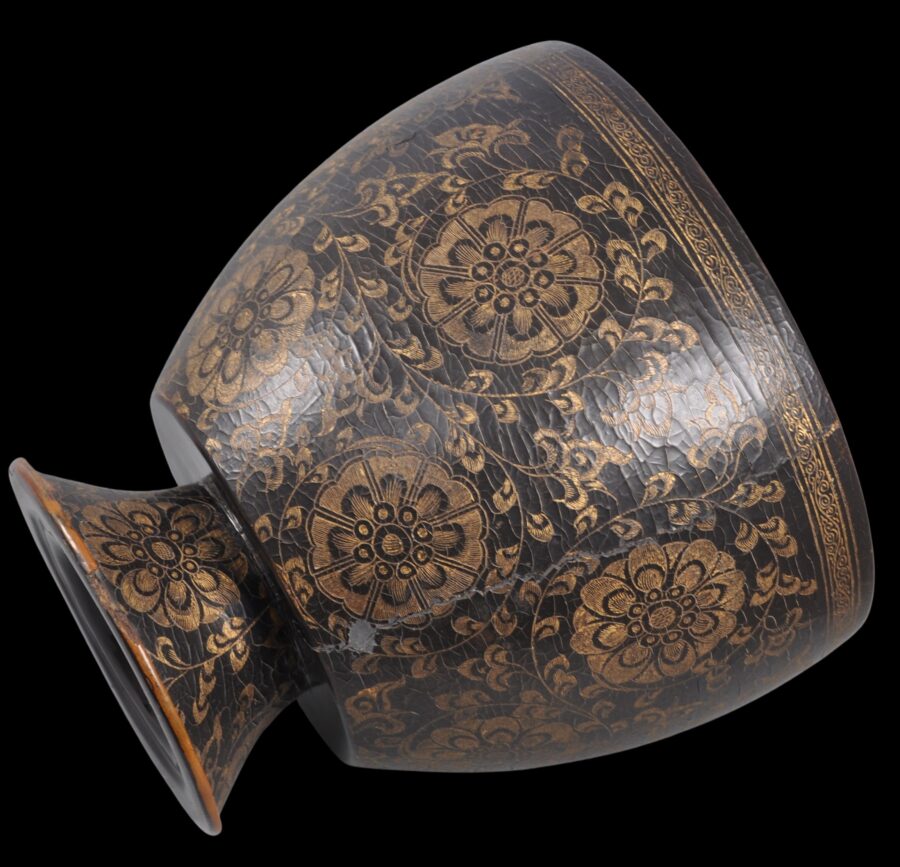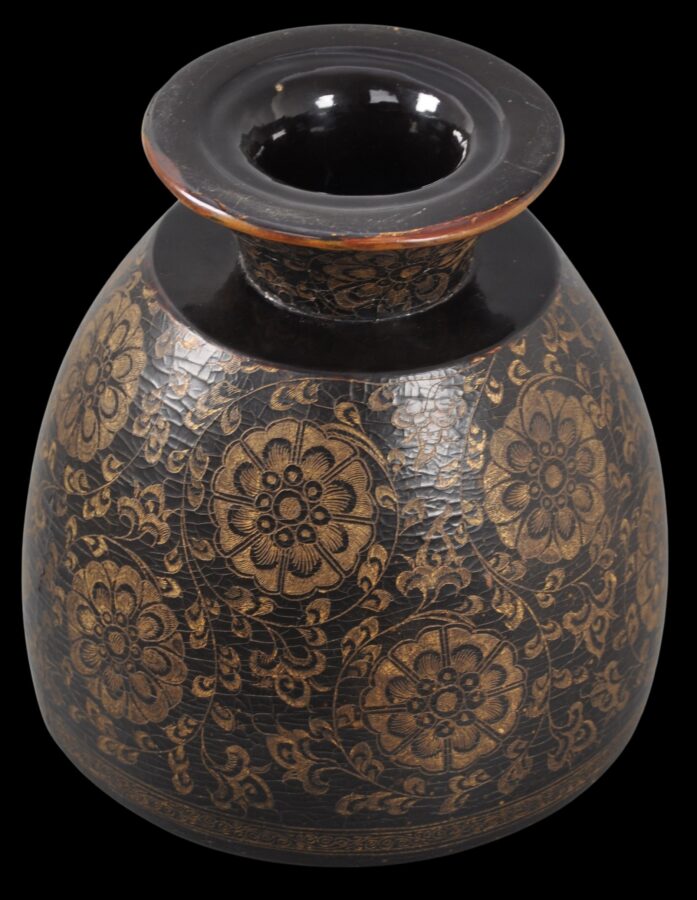Enquiry about object: 9955
Exceptionally Rare, Early, Ryukyu Lacquer & Gilt Vase
Ryukyu Islands circa 1400 AD
height: 17.6cm, diameter: 17.5cm, weight: 511g
Provenance
private collection, England
This large vase of Ryukyu lacquerware is notable for its great age, size, quality and condition. Made around 1400AD (with radiocarbon dating to this effect) it dates to the earliest period of Ryukyu lacquer manufacture.
The Ryukyu Islands are a chain of small islands that stretch in an arc from Japan to Taiwan, in the South China Sea. They have been on the sea-trade routes from Asia to Europe and Ryukyu lacquer is known in particularly early European kunsthammer collections. The Islands were administered as an independent kingdom from 1429 to 1879 after which they were annexed by Japan.
The vase comprises a wooden vessel that has been decorated all over with black lacquer that has been incised with chrysanthemum flower and leaf motifs and then filled with gold leaf.
The rendering of the chrysanthemum blooms has been achieved by infilling the petals with vertical lines.
The technique of incised and gilt decoration is of Chinese origin and was known as qiang-jin.
The interior has been coloured by having been rubbed with silver powder.
Garner (1972, p. 42) illustrates a section of qiang-jin decoration on an item of lacquer attributed to the Ryukyu Islands that uses chrysanthemum bloom motifs that are very similar to that on the vessel here, in terms of their construction.
Garner (1972, p. 16) differentiates between lacquer that is painted with gold and that which is incised with the incisions being filled with gold. ‘Many pieces painted in gold are known’, he writes, ‘but it seems likely that few are earlier than the eighteenth century. The incised pieces, on the other hand, are fewer in number in this late period than the gold-painted pieces but they go back much earlier…’ Early Chinese text which mention qiang-jin are cited which were published in 1366. Garner also mentions records in Japan which mention qiang-jin lacquer and which date to the very early 15th century.
Ryukyu lacquer has long been highly valued in Japan. Examples often were kept in temples and monasteries and so many extant examples in Japan can be of great antiquity, as is the example here.
Indeed, the example here has been modified at some point. The foot has been amended and the interior of the foot and the underside of the main body have both been re-lacquered with thick, shiny, black Japanese lacquer. Perhaps at some stage the foot was broken or shortened and was reapplied with new lacquer in Japan. These amendments are not recent however, and very much form part of the object’s history.
This item is accompanied by a radiocarbon dating report (RCD-8139) from Oxford-based RCD Lockinge which gives the likely date ranges (according to what assumptions are used) as 1397-1425 AD (68% confidence level) and 1325-1354 AD and 1393-1433 AD (95% confidence level).
Other than the likely modifications mentioned above, the body has an old shrinkage-related crack running down one side but this has been filled and stabilised and is not particularly apparent. There is some scuffing to one section of the edge of the foot as well. These are all relatively inconsequential given the size, age and rarity of this piece.
References
Garner, H.M., Ryukyu Lacquer, Monograph Series 1, Percival David Foundation of Chinese Art, SOAS/University of London, 1972.


